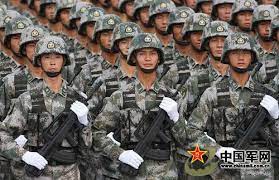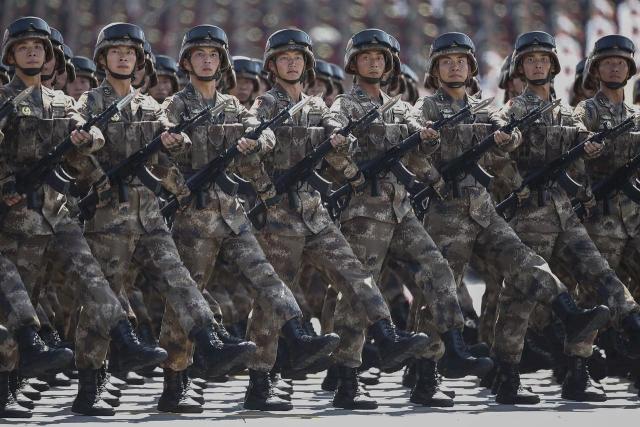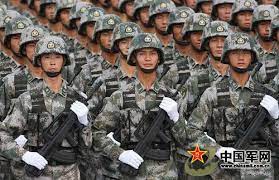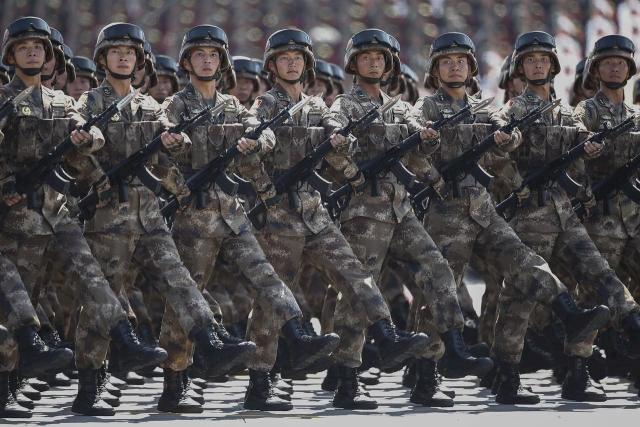Chinese Military From “Cyber Warfare” to “Mosaic Warfare”
繁體中文原文:
理論是行動的先導。 加強作戰理念創新、推動作戰指導創新一直是世界各國軍隊培養軍事優勢的重要途徑。 近年來,美軍先後提出「網路戰」、「馬賽克戰」等前線作戰理論,以實現作戰模式的「生產關係」能夠更適應「生產力」的發展的作戰能力。 透過這兩種作戰理論的比較分析,世人可以一窺美軍作戰能力建設思維的變化,特別是對「馬賽克戰」制勝機制的認識,從而有的放矢,找到有效的把關。和餘額。
● 從威脅反應到戰爭設計—
積極塑造並推動作戰能力提升
「基於威脅」或「基於能力」是軍事作戰能力建構的兩種基本方式。 「威脅為本」體現需求牽引,著力解決近中期實際問題,是軍隊作戰能力建構應遵循的基本法則; 「能力為本」體現目標牽引,瞄準未來戰略任務,以新作戰理論支撐戰略理念,是軍事行動的關鍵。 這樣,才能實現能力的創新與超越。 從「網路戰」到「馬賽克戰」的發展,體現了上述兩種方式內在規律的差異和演變,也體現了近年來美軍推進作戰能力建設的思路和理念的變化。
觀念開始改變。 網路空間最初是為了解決人類的交流需求而創建的。 後來逐漸演變為獨立於陸、海、空、天的新作戰域。 由此衍生出以爭奪網路空間主導權為核心的「網路空間」。 相較之下,「馬賽克戰」是美軍為維持戰略優勢、直接針對競爭對手而主動研發設計的新作戰理念。其形成過程體現了需求驅動與能力驅動相結合、戰略性、主動性、牽引力更加突出。
技術應用新思路。 「網路戰」強調發展新一代技術來支持作戰理念的轉變和實施。 《馬賽克戰》突破了這個模式,並不過度強調新一代裝備技術的研發。 更注重軍民共性技術的快速轉化和成熟技術的漸進式迭代。 其基本想法是,依照叫車、眾籌開發等服務平台的應用理念,在現有裝備的基礎上,透過模組升級和智慧化改造,將各種作戰系統單元「鑲嵌」成單功能、可靈活組裝的單元。 、易於更換的“積木”或“像素”,建構動態協調、高度自主、無縫整合的作戰系統,體現新技術驅動的概念。
路徑開發新設計。 「網路戰」是網路空間的一個伴隨概念。 網路空間發展到哪裡,「網路戰」就會隨之而來。 一般來說,我們在進行「主觀」概念設計之前,先考慮「客觀」物質條件。 ,對路徑發展有很強的依賴。 「馬賽克戰」首先從「主觀」演變為「客觀」。 透過開發能夠動態調整職能結構的部隊設計模型,能夠適應不同的作戰需求和戰場環境的變化。
可見,與以往的「網路戰」等作戰概念相比,「馬賽克戰」目標更明確、技術更成熟、路徑更可靠,體現了美軍積極塑造的思維轉變。
● 從網路中心到決策中心—
群體智慧實現系統能量優化釋放
人工智慧技術是資訊時代的關鍵變量,也是「馬賽克戰」體系發展的核心增量。 “網路戰”強調“網路中心”,而“馬賽克戰”緊緊圍繞著人工智慧技術核心,將制勝關鍵從“網路中心”調整為“決策中心”,將作戰系統架構從“從系統級到平台級的聯盟轉變為功能級、要素級的融合,尋求在網路能量充分匯聚的前提下,利用群體智慧技術實現系統能量的最佳化釋放,賦予網路新的內涵。智慧戰爭的致勝機制
時代。
用“快”控制“慢”,在認知上佔上風。 未來戰爭中,戰場情勢瞬息萬變,時間元素的權重將持續上升。 「快」與「慢」可以產生近乎尺寸縮小的戰鬥打擊效果。 「馬賽克戰」利用資料資訊技術與人工智慧技術,提升己方「OODA」循環的單循環決策速度,擴大並行決策的廣度,降低群循環決策的粒度,加快系統運作進度,整體打造領先一步的典範。 「先發制人」的姿態旨在牢牢掌控戰場認知決策的主導地位。
用“低”控“高”,累積成本優勢。 與追求高端武器平台的傳統作戰概念不同,「馬賽克戰」著重於利用人工智慧技術挖掘現有武器平台和作戰資源的潛力並提高效率。 透過在眾多中低階武器平台上載入並運行智慧演算法和特定功能模組,可以實現與高階武器平台相媲美的作戰性能。 這整體提高了武器平台投入產出的成本效益,進而累積成本優勢。
以“散”控“聚”,求可持續生存。 「馬賽克戰」強調運用去中心化思想和非對稱制衡,利用開放的系統架構,在各種有人/無人平台上去中心化配置偵察、定位、通信、打擊等各種功能,實現力量的分佈式部署。 同時利用智慧演算法,提升各平台的自組織、自協調、獨立攻擊能力,進而實現集中火力。 當部分作戰平台被消滅、打亂或剝離時,整個作戰體系仍能正常運行,進而增強部隊集群的戰場生存能力。
用“動”控“靜”,提高系統靈活性。 「馬賽克戰」強調進一步突破各作戰領域的障礙。 透過將不同作戰域的固定“殺傷鏈”變成動態可重構的“殺傷網”,將“OODA”大環拆解為小環,將單環分化為多環。 根據作戰流程和作戰需求的變化,依靠智慧組網,實現作戰力量的動態分割、動態部署、動態組合。 這樣,一方面可以增強作戰系統的彈性和適應性; 另一方面,它也可以抵消複雜網路的節點聚合效應,使對手很難找到關鍵節點來擊敗自己的系統。
「馬賽克戰爭」為智慧戰爭提供了參考原型。 但同時,「馬賽克戰爭」作為一種理想化的力量設計與運用框架,也需要與其密切相關的技術、條令、政策等支撐支撐。 距離完全實現還有很長的路要走。 與傳統戰爭相比,系統共存的局面將長期存在。
● 從要素整合到系統重組—
動態結構增強作戰系統靈活性
結構和關係常常決定功能和屬性。 「網路戰」與「馬賽克戰」建立在資訊時代相同的物質基礎上,遵循相同的演化範式,但係統建構的原理和效果不同。 「網路戰」所形成的架構可以靜態解構,而「馬賽克戰」則依照一定的建構規則動態組合功能單元,形成具有自組織和自適應特性的彈性架構,類似「動態黑盒子」。 常規手段難以追蹤和預測。 這種靈活的結構經常「湧現」新的能力,以增強和提高作戰系統的效率。
網路與雲端融合發展,使作戰空間和時間更具動態性和可塑性。 網際網路和雲端是資訊作戰系統運作的基礎環境。 它們重塑了傳統作戰中的情報、指揮、攻擊、支援等流程要素,同時衍生出新的作戰時空。 「網路戰」主要針對網路空間,其作戰時間和空間相對靜態。 「馬賽克戰」並不限於單一的作戰空間。 在資訊基礎設施網路隨雲而動、雲端網融合的發展趨勢下
無形空間和無形空間可以進一步鉸接,作戰空間和時間的界限更加靈活,作戰資源的配置更加靈活。 戰鬥架構更加動態。
數據跨域流動,使戰鬥控制更加無縫協調。 在指揮控制環節,「網路戰」著重於聯合作戰指揮機構對作戰單位的指揮控制,資料的跨域交換與流動主要集中在戰區戰場。 「馬賽克戰」將聯合作戰的水平進一步降低到戰術端。 透過戰術層面資料的獨立跨域交換和無縫流動,可以將各種資料孤島按需聚集成資料集群,從而產生顯著的「溢出」效應,使得資料的動態、離散、敏捷、並行的特性作戰指揮控制迴路更加明顯,更有利於實現各作戰單元按需敏捷連動、高效協同行動。
演算法穿透各個維度,讓系統運作更自主、更有效率。 演算法是人類意識在網路空間的映射,形成兩種基本形式:意圖轉化的編譯碼和知識轉化的神經網路。 在《網路戰》中,大量使用編譯程式碼,而神經網路僅在本地使用。 在「馬賽克戰爭」中,演算法拓展到塑造規則和提供引擎兩大關鍵功能,應用的廣度和深度更為凸顯。 塑造規則以編譯碼為主,神經網路為輔,建構「馬賽克戰」系統的流程架構與運作邏輯,為其不確定性、適應性和「突現」能力奠定結構基礎; 提供引擎主要整合智慧演算法模型,分送到邊緣要素進行運算,形成知識擴散效應,從而全面提升「馬賽克戰」系統的智慧自主作戰能力。
邊緣能量的獨立釋放,讓戰鬥方式更靈活多元。 邊緣是各種有人/無人作戰功能單元的抽像模型,也是系統能力「湧現」的直接來源。 在「網路戰」體系中,邊緣要素與上級和下級指揮控制流程緊密耦合,處於精確控制狀態。 在「馬賽克戰爭」系統中,邊緣要素的感知、互動、推理、決策能力大幅提升。 其「OODA」循環無需回溯至上級指揮機構,有利於支撐形成高低、有人/無人的分散組合。 優化的作戰集群形態可以賦予邊緣分子更多的自組織權威,顯著增強戰場對抗優勢。
可見,如果說「網路戰」被稱為精密的戰爭機器,那麼「馬賽克戰」則可以被視為一個能夠激發作戰能力動態增長的複雜「生態」。 網路雲、資料、演算法和邊緣設備產生的新技術變化促進了動態且複雜的「架構」的形成。 這種結構反過來又對要素、平台和系統進行反向調節,不斷湧現新的能力,對作戰系統的賦能和演進發揮重要作用。
● 從制度突破到複合對抗——
分析利弊,尋求有效制衡
「馬賽克戰」在某種程度上代表了未來聯合作戰的可能發展方向。 要充分研究掌握「馬賽克戰」制勝機制,將資訊通信領域塑造成為打破傳統戰爭時空界限的新領域,打造雲化作戰新理念,建構強大的資訊通訊領域新格局。國防資訊基礎設施保障能力。 突顯軍事資訊網路安全防禦能力,增強戰略戰役指揮機構運作的基礎支撐能力,不斷完善網路資訊體系。
另一方面,「馬賽克戰」理論的出現,使得傳統作戰手段難以透過搶先並控制有限的目標節點來達到毀點、斷環的系統破局效果。 但也應該看到,任何制度都有其固有的矛盾。 即便是看似“無懈可擊”的去中心化結構的“馬賽克戰爭”,依然能找到有效破解的方法。 例如,掌握系統的複雜性特徵,利用其相關性和依賴性,突顯通訊網路的功能抑制
建構網路和電力複合攻擊路徑,實現作戰系統各單元的拆解和隔離; 掌握其結構的耗散特性,利用其對外部資訊的依賴,凸顯資訊資料的偽裝性和誤導性,促使作戰系統轉變為資訊封閉、資訊過載等異常狀態; 掌握其群體自主特點,利用其對關鍵技術的依賴,凸顯與智慧演算法的對抗,降低效率,抑制各作戰單元的智慧驅動力; 抓住其功能非線性特點,利用其未知漏洞,突出戰場差異化打擊評估,以更高的效率、更快的速度探索和發現作戰系統中的不平衡點,尋找系統中的關鍵弱點進行突破。
(作者單位:61001部隊)
外文音譯:
Chinese Military From “Cyber Warfare” to “Mosaic Warfare”
Theory is the precursor to action. Strengthening innovation in combat concepts and promoting innovation in combat guidance have always been important ways for militaries around the world to cultivate military advantages. In recent years, the U.S. military has successively proposed cutting-edge combat theories such as “cyber warfare” and “mosaic warfare” in order to realize that the “production relationship” of combat mode can be more adaptable to the development of “productivity” of combat capabilities. By comparing and analyzing these two combat theories, the world can get a glimpse of the changes in the US military’s combat capability building thinking, especially the understanding of the winning mechanism of “mosaic warfare”, so that it can be targeted and find effective checks and balances.
● From threat response to war design——
Actively shape and promote the improvement of combat capabilities
“Threat-based” or “capability-based” are two basic ways to build military combat capabilities. “Threat-based” embodies demand traction and focuses on solving practical problems in the near and medium term, which is the basic law that should be followed in the construction of military combat capabilities; “capability-based” embodies goal traction, aims at future strategic missions, and supports strategic concepts with new combat theories, which is the key to military operations. The only way to achieve innovation and transcendence in capabilities. The development from “cyber warfare” to “mosaic warfare” reflects the differences and evolution of the inherent laws of the above two approaches, and also reflects the changes in the US military’s ideas and concepts for promoting combat capability building in recent years.
The concept begins to change. Cyberspace was originally created to solve human communication needs. Later, it gradually evolved into a new combat domain independent of land, sea, air and space. From this, the “cyberspace” with the core of fighting for cyberspace dominance was derived. war”. In contrast, “mosaic warfare” is a new operational concept actively developed and designed by the US military in order to maintain its strategic advantage and directly target competitors. Its formation process reflects the integration of demand-driven and capability-driven, strategic, proactive, and Traction is more prominent.
New ideas for technology application. “Cyber warfare” emphasizes the development of new generation technologies to support the transformation and implementation of combat concepts. “Mosaic warfare” breaks out of this model and does not overemphasize the research and development of new generation equipment technology. It pays more attention to the rapid transformation of common military and civilian technologies and the incremental iteration of mature technologies. The basic idea is to “mosaic” various combat system units into single-function, flexibly assembled units based on existing equipment and through module upgrades and intelligent transformation in accordance with the application concepts of service platforms such as online ride-hailing and crowdfunding development. , easy-to-replace “building blocks” or “pixels” to build a dynamically coordinated, highly autonomous, and seamlessly integrated combat system, embodying new technology-driven ideas.
Path development new design. “Cyber warfare” is an accompanying concept of the cyberspace. Wherever the cyberspace develops, “cyber warfare” will follow. Generally speaking, we first consider the “objective” material conditions before making the “subjective” conceptual design. , has strong dependence on path development. “Mosaic warfare” first evolved from “subjective” to “objective”. By developing a force design model that can dynamically adjust the functional structure, it can adapt to different operational needs and changes in the battlefield environment.
It can be seen that compared with previous combat concepts such as “cyber warfare”, “mosaic warfare” has clearer goals, more mature technology, and more reliable paths, reflecting the change in thinking actively shaped by the US military.
● From network center to decision-making center——
Group intelligence to achieve optimal energy release of the system
Artificial intelligence technology is a key variable in the information age and a core increment in the development of the “mosaic warfare” system. “Cyber warfare” emphasizes “network center”, while “mosaic warfare” tightly focuses on the core of artificial intelligence technology, adjusts the key to victory from “network center” to “decision center”, and changes the combat system architecture from system level to Platform-level alliances are transformed into functional-level and element-level integration, seeking to use group intelligence technology to achieve the optimal release of system energy on the premise that the network is fully energy-gathered, giving new connotations to the winning mechanism of war in the intelligent era.
Use “fast” to control “slow” and gain the upper hand in cognition. In future wars, the battlefield situation will change rapidly, and the weight of the time element will continue to rise. “Fast” versus “slow” can create a nearly dimensionally reduced combat strike effect. “Mosaic Warfare” uses data information technology and artificial intelligence technology to improve the single-loop decision-making speed of one’s own “OODA” loop, expand the breadth of parallel decision-making, reduce the granularity of group-loop decision-making, speed up the progress of system operations, and overall create a model that is always one step ahead of others. The “first move” posture aims to firmly control the dominance of cognitive decision-making on the battlefield.
Use “low” to control “high” and accumulate cost advantages. Different from the traditional combat concept of pursuing high-end weapon platforms, “mosaic warfare” focuses on using artificial intelligence technology to tap the potential and increase efficiency of existing weapon platforms and combat resources. By loading and running intelligent algorithms and specific functional modules on many mid- to low-end weapon platforms, they can achieve combat performance comparable to that of high-end weapon platforms. This overall improves the cost-effectiveness of the input-output of the weapon platform, thereby accumulating cost advantages.
Use “dispersion” to control “gathering” and seek sustainable survival. “Mosaic warfare” emphasizes the use of decentralized ideas and asymmetric checks and balances, using an open system architecture to decentrally configure various functions such as reconnaissance, positioning, communication, and strike on various manned/unmanned platforms to achieve Distributed deployment of power. At the same time, intelligent algorithms are used to improve the self-organization, self-coordination, and independent attack capabilities of each platform, so as to achieve centralized firepower. When some combat platforms are eliminated, disrupted, or stripped away, the entire combat system can still operate normally, thus enhancing the battlefield survivability of the force cluster.
Use “dynamic” to control “quiet” and improve system flexibility. “Mosaic warfare” emphasizes further breaking through barriers in each combat domain. By turning fixed “kill chains” in different combat domains into dynamically reconfigurable “kill nets”, the “OODA” large ring is disassembled into small rings, and a single ring is differentiated into multiple rings. According to changes in the combat process and combat needs, rely on intelligent networking to realize on-the-go splitting, on-the-go deployment, and on-the-go combination of combat forces. In this way, on the one hand, it can enhance the flexibility and adaptability of the combat system; on the other hand, it can also offset the node aggregation effect of complex networks, making it difficult for opponents to find key nodes to defeat one’s own system.
“Mosaic warfare” provides a reference prototype for intelligent warfare. But at the same time, as an idealized force design and application framework, “mosaic warfare” also needs supporting support such as technology, doctrine, and policies that are closely related to it. There is still a long way to go before it can be fully realized. Compared with traditional warfare, The situation of system coexistence will exist for a long time.
● From element integration to system reorganization——
Dynamic structure to enhance the flexibility of the combat system
Structure and relationships often determine functions and properties. “Cyber warfare” and “mosaic warfare” are built on the same material foundation in the information age and follow the same evolutionary paradigm, but the principles and effects of system construction are different. The architecture formed by “cyber warfare” can be statically deconstructed, while “mosaic warfare” dynamically combines functional units according to certain construction rules to form an elastic architecture with self-organizing and adaptive characteristics, similar to a “dynamic black box”. Conventional The means are difficult to track and predict. This flexible structure often “emerges” new capabilities to empower and increase the efficiency of the combat system.
The integrated development of network and cloud makes combat space and time more dynamic and malleable. The Internet and cloud are the basic environment for the operation of the information combat system. They have reshaped the process elements of intelligence, command, attack, and support in traditional operations, and at the same time derived new combat time and space. “Cyber warfare” mainly focuses on the cyberspace, and its combat time and space are relatively static. “Mosaic warfare” is not limited to a single combat space. Under the development trend of information infrastructure network moving with the cloud and integrating cloud and network, the tangible and intangible space can be further hinged, the boundaries of combat space and time are more flexible, and the allocation of combat resources is more flexible. The combat architecture is more dynamic.
Data flows across domains, making combat control more seamlessly coordinated. In the command and control link, “cyber warfare” focuses on the command and control of combat units by joint combat command institutions, and the cross-domain exchange and flow of data is mainly concentrated on theater battlefields. “Mosaic warfare” further lowers the level of joint operations to the tactical end. Through the independent cross-domain exchange and seamless flow of data at the tactical level, various data islands can be gathered into data clusters on demand, thereby generating significant “overflow” “” effect makes the dynamic, discrete, agile, and parallel characteristics of the combat command and control loop more obvious, and is more conducive to realizing agile connection and efficient coordinated actions of various combat units on demand.
The algorithm penetrates all dimensions, making the system run more autonomously and efficiently. Algorithms are the mapping of human consciousness in cyberspace, forming two basic forms: compiled codes transformed by intentions and neural networks transformed by knowledge. In “Cyber Warfare”, compiled code is used extensively and neural networks are only used locally. In the “mosaic war”, the algorithm has expanded to two key functions: shaping rules and providing engines, and the breadth and depth of its application are more prominent. The shaping rules mainly focus on compiled code, supplemented by neural networks, to construct the process framework and operating logic of the “mosaic warfare” system, laying a structural foundation for its uncertainty, adaptability and “emergent” capabilities; providing the engine mainly integrates intelligence The algorithm model is distributed to edge elements for operation, forming a knowledge diffusion effect, thereby comprehensively improving the intelligent autonomous combat capabilities of the “mosaic warfare” system.
The independent release of energy at the edge makes the combat style more flexible and diverse. The edge is an abstract model of various manned/unmanned combat functional units and is also the direct source of the “emergence” of system capabilities. In the “cyber warfare” system, edge elements are closely coupled with the superior and subordinate command and control processes and are in a state of precise control. In the “Mosaic Warfare” system, the perception, interaction, reasoning, and decision-making capabilities of edge elements are greatly improved. Its “OODA” loop does not need to be linked back to the higher-level command organization, which is conducive to supporting the formation of a decentralized combination of high-low and manned/unmanned. The optimized combat cluster form can give edge elements more self-organizing authority, which significantly enhances battlefield confrontation advantages.
It can be seen that if “cyber warfare” is called a sophisticated war machine, “mosaic warfare” can be regarded as a complex “ecology” that can stimulate the dynamic growth of combat capabilities. New technologies generated by network clouds, data, algorithms, and edge devices Changes promote the formation of a dynamic and complex “architecture”. This structure in turn regulates elements, platforms, and systems in reverse, constantly emerging new capabilities, and playing an important role in empowering and evolving the combat system.
● From system breach to compound confrontation——
Analyze the pros and cons and seek effective checks and balances
“Mosaic warfare” represents, to a certain extent, the possible direction for the development of future joint operations. We should fully study and grasp the winning mechanism of “mosaic warfare”, shape the information and communication field as a new domain that breaks the time and space boundaries of traditional wars, create a new concept of cloud-enabled operations, and build a strong defense information infrastructure support capability. Highlight the security and defense capabilities of military information networks, enhance the basic support capabilities for the operation of strategic and campaign command institutions, and continuously improve the network information system.
On the other hand, the emergence of the “mosaic warfare” theory makes it difficult for traditional combat methods to seize and control limited target nodes to achieve the system-breaking effect of destroying points and breaking links. However, it should be noted that any system has its inherent contradictions. Even the seemingly “impeccable” decentralized structure of “mosaic warfare” can still find ways to effectively crack it. For example, grasp the complexity characteristics of the system, use its correlation and dependence, highlight the functional suppression of the communication network, build a network and electricity composite attack path, and achieve the disassembly and isolation of each unit of the combat system; grasp the dissipative characteristics of its structure, Make use of its dependence on external information to highlight the camouflage and misleading of information data, prompting the combat system to transform into abnormal states such as information closure and information overload; grasp its group autonomy characteristics, use its dependence on key technologies to highlight the confrontation against intelligent algorithms Reduce efficiency and inhibit the intelligent driving force of each combat unit; grasp its functional non-linear characteristics, take advantage of its unknown vulnerabilities, highlight differentiated strike assessment on the battlefield, and explore and discover imbalance points in the combat system with higher efficiency and faster speed , looking for key weaknesses in the system to break.
(Author’s unit: Unit 61001)
中國軍事資源:http://www.mod.gov.cn/gfbw/jmsd/4894888.html





